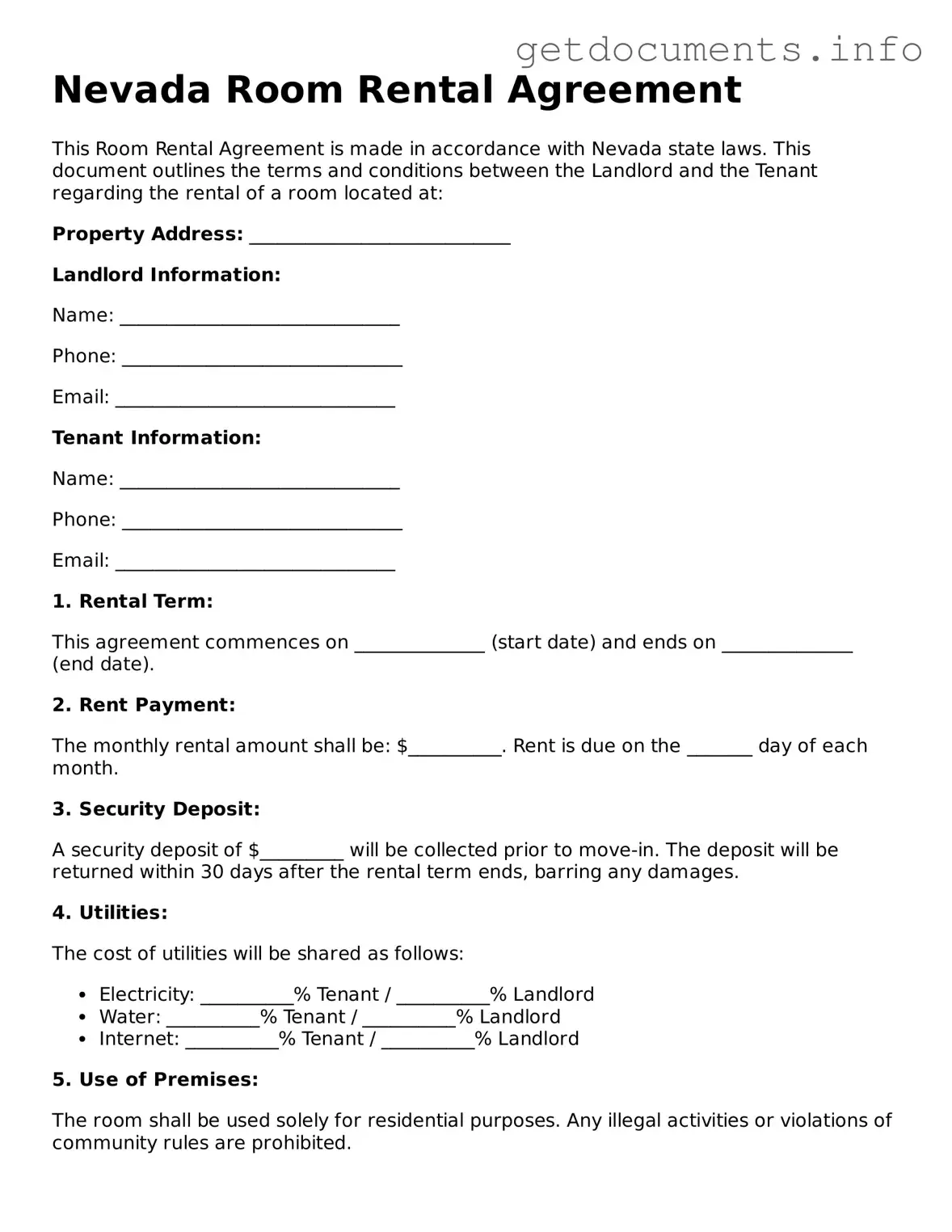The Nevada Room Rental Agreement form serves as a crucial document in the realm of residential leasing, outlining the rights and responsibilities of both landlords and tenants. This agreement typically includes essential details such as the names of the parties involved, the rental property's address, and the duration of the lease. Additionally, it specifies the rental amount, payment due dates, and security deposit requirements, ensuring that both parties have a clear understanding of their financial obligations. Provisions regarding maintenance responsibilities, rules for property use, and conditions for termination or renewal of the lease are also commonly addressed. By laying out these terms in a clear and organized manner, the form aims to prevent misunderstandings and disputes, promoting a harmonious landlord-tenant relationship. Furthermore, it often includes sections related to late fees, eviction procedures, and any applicable local laws, reinforcing the importance of compliance with state regulations. Understanding this agreement is essential for anyone involved in renting a property in Nevada, as it provides a framework that governs the rental experience.
